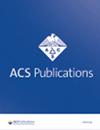Propolis Bioactive Compounds of Stingless Bees (Tetragonula laeviceps) from Mount Merapi Slope, Sleman, Yogyakarta
引用次数: 0
Abstract
The emergence of many new diseases due to viruses and bacteria demands for an increase in the discovery of natural alternative medicines. One example of sources of natural medicine is the honey and the propolis of Tetragonula laeviceps bee. The efficacy, physical and chemical properties of honey are known to be influenced by the type of pollen and the environment whilst the composition of propolis is influenced by the geological factors. Therefore, the purpose of this research was to study the composition of propolis’ bioactive compounds of T.laeviceps bee from Mount Merapi Slope, Sleman, Yogyakarta. The bioactive compound composition of the propolis sample were analysed by Gas Chromatograph-Mass Spectrometry (GC-MS). The analysis showed that the propolis has various type of compounds containing up to 20 bioactive compounds which can be classified in three different groups namely alkaloids (70%), phenolics (20%), and terpenoids (5%). Most of these compounds were found to be biologically important. However, further research is still required to confirm the potential antimicrobial properties of the propolis’ bioactive compounds.日惹Sleman Merapi山无刺蜂(Tetragonula laeviceps)蜂胶活性物质研究
由于病毒和细菌引起的许多新疾病的出现,要求增加对天然替代药物的发现。天然药物来源的一个例子是蜜蜂的蜂蜜和蜂胶。蜂蜜的功效和理化性质受花粉种类和环境的影响,蜂胶的组成受地质因素的影响。因此,本研究的目的是研究来自日惹市Sleman Merapi坡的laeviceps蜜蜂蜂胶的生物活性成分。采用气相色谱-质谱(GC-MS)分析蜂胶样品的生物活性化合物组成。分析表明,蜂胶含有多种类型的化合物,含有多达20种生物活性化合物,可分为生物碱(70%)、酚类(20%)和萜类(5%)三大类。这些化合物中的大多数被发现具有重要的生物学意义。然而,还需要进一步的研究来证实蜂胶生物活性化合物的潜在抗菌特性。
本文章由计算机程序翻译,如有差异,请以英文原文为准。
求助全文
约1分钟内获得全文
求助全文

 求助内容:
求助内容: 应助结果提醒方式:
应助结果提醒方式:


